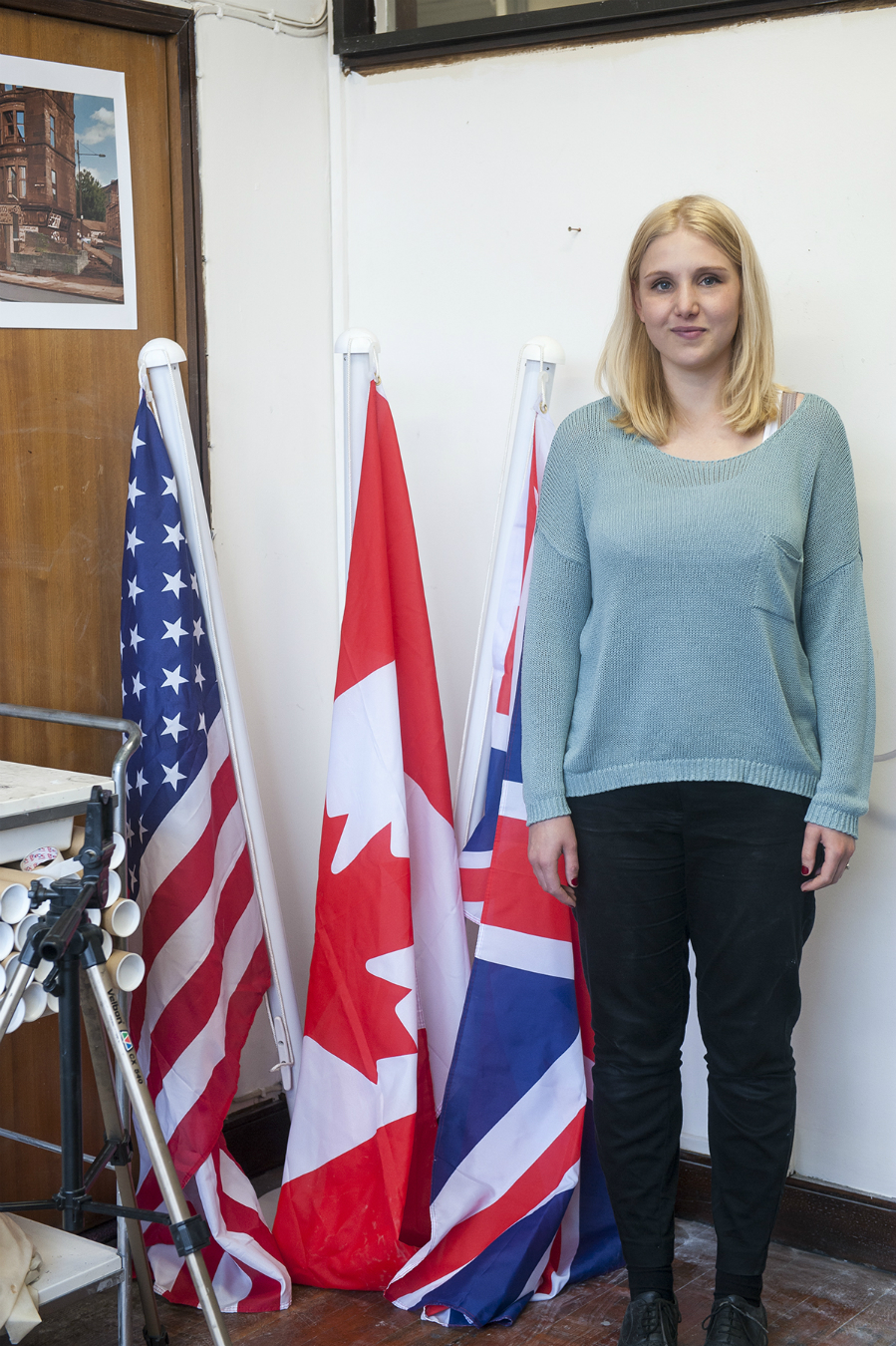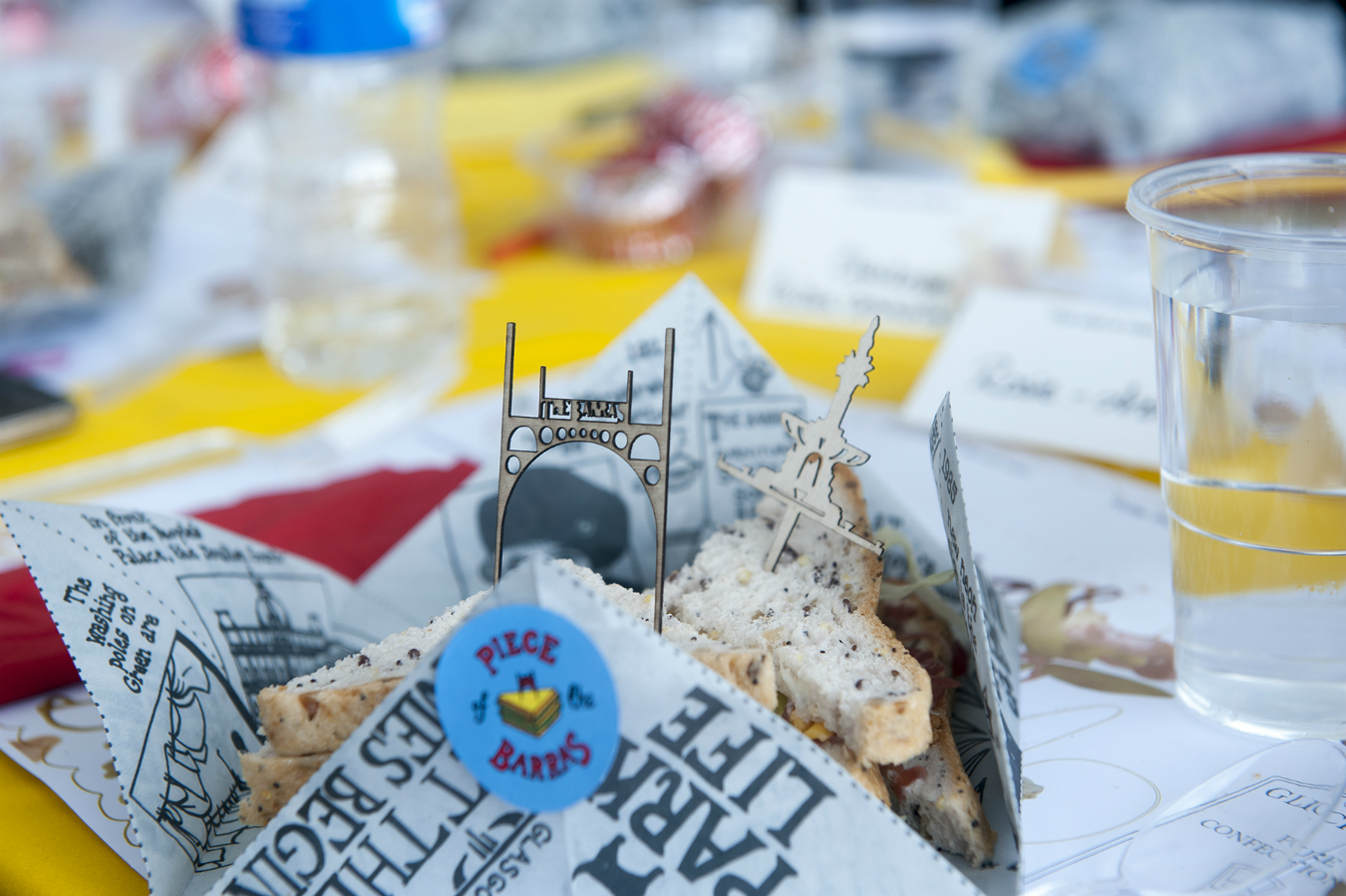From the 1970s to the early 1980s, Glasgow was grim, with high crime rates, drugs, and gangs. Change began with the launch of the Glasgow’s Miles Better campaign, featuring Roger Hargreaves’ smiley Mr. Happy. The project was a great success and it, along with subsequent civic endeavours, helped Glasgow shed its rough reputation. At the heart of this change was the art being produced from the world-renowned Glasgow School of Art. In the 1980s, a group of young, bold, figurative painters known as The New Glasgow Boys went on to have national and international success. Glasgow became a mecca for artists with its affordable art studios, low cost of living, variety of galleries, and top facilities such as the Glasgow Sculpture Studios. Showcased here is Glasgow’s creative renaissance and some of the people behind its booming visual art scene.
-

This public art installation hangs high on a tall building in the heart of Glasgow’s Merchant City. The single, bright neon sign bears the word Empire. There are no signs to identify it as an art piece, and it can be interpreted in many ways. The work was created by Glaswegian Douglas Gordon, who has shown in cities around the globe. A graduate of the Glasgow School of Art, Gordon won the prestigious Turner Prize for outstanding British visual artist in 1996.
-

Alberta-born artist Garnet McCulloch now calls Glasgow home. McCulloch has managed the FireWorks Studio for more than 10 years, and produces his own functional pottery, from teacups to Tiki mugs
-

Turner Prize nominee Phil Collins (right) stands with an actor from his film, “Tomorrow is Always Too Long”, which showed at Glasgow’s Gallery of Modern Art. The film, described as a love letter to Glasgow, took a year to shoot. It includes a variety of Glaswegians, from school children to club kids and elderly star-crossed lovers.
-

Glasgow School of Art alumnus Calum Matheson stands at The Old Hairdresser’s, where a painting exhibition is showing. This independent arts centre and bar is located in Renfield Lane in Glasgow’s city centre. This top room is a bare space that hosts an array of events, exhibitions, installations, and performances most nights of the week.
-

SWG3 is a non-profit art space located in an old Customs and Excise tobacco bond . The complex is home to a community of more than120 artists and musicians, including Turner Prize nominee Jim Lambie. Pictured is “Love ( billboard project No.1 )”, his latest public art installation. The city’s commuter train runs level and parallel to the artwork and can be seen by passengers.
-

Canadian and video artist Samantha Madonik moved to Glasgow from Toronto in 2011 to complete her master’s degree at the Glasgow School of Art. After graduation, she decided to make the city her home. Madonik shares her studio with husband and painter Philip Gurrey. Together they have started the Glasgow Artist Guild, which hosts monthly events where an invited artist gives a talk followed by group discussion.
-

Sarah Munro is the director of Glasgow’s Tramway, a place that commissions and presents contemporary art. Tramway was selected to host the 2015 Turner Prize—the first time the prestigious exhibition has ever been held in Scotland. An exhibition of the four nominees (Assemble, Bonnie Camplin, Janice Kerbel, and Nicole Wermers) will run from Oct. 1, 2015 to Jan.17, 2016 at Tramway. The winner receives £25,000.
-

Pidgin Perfect is a multidisciplinary creative studio based in Glasgow. The studio created a public lunch called Barras Banchetto, where the regeneration of Glasgow’s world famous Barras Market is discussed among local residents. Several artists and local businesses paired up to craft a unique item for the lunch. Glasgow School of Art alumnus Rosemary Cunningham created toothpicks and packaging, inspired by the distinctive Barras Market gates, used for sandwiches made by one of the market’s venerable businesses, The Pantry Café.







